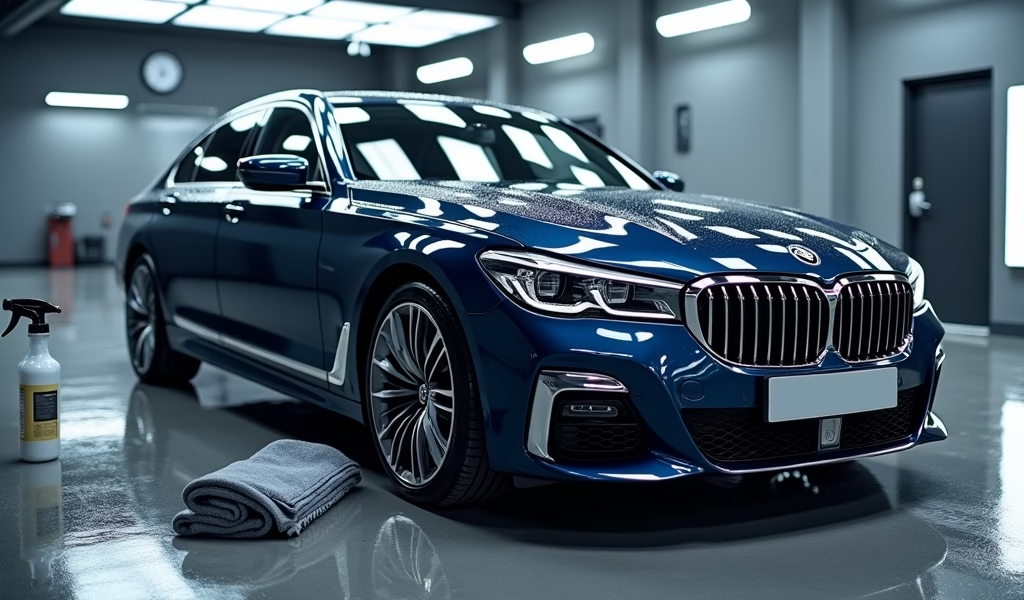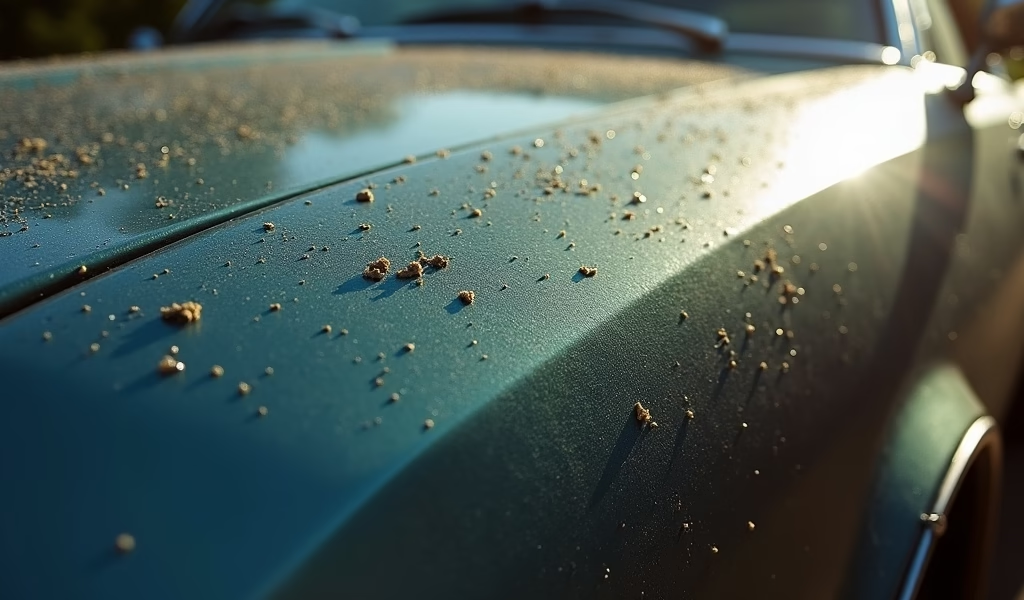Overview
This article provides five essential car paint protection techniques: using the two-bucket washing method, selecting proper pH-balanced car wash products, employing correct drying techniques to prevent water spots, maintaining regular waxing schedules, and considering professional protection options like ceramic coatings and paint protection film. The author emphasizes that consistent, proper car washing routines are crucial for preserving vehicle value and appearance, with each technique designed to prevent damage while maintaining a showroom-quality finish.
Table of Contents
- Introduction
- The Two-Bucket Washing Method: Your Paint’s Best Friend
- Choosing the Right Products: Not All Soaps Are Created Equal
- Proper Drying Techniques: Preventing Water Spots
- Regular Waxing: Your Paint’s Protective Shield
- Professional Paint Protection Options Worth Considering
- Conclusion
- Frequently Asked Questions
Introduction
Your car’s paint is more than just a pretty face—it’s the first line of defense against rust, corrosion, and the elements. As a mechanic who’s restored countless vehicles over my 20-year career, I’ve seen firsthand how proper washing techniques can extend a paint job’s life by years, while poor habits can destroy it in months.
When you wash your car, you’re not just removing dirt—you’re performing essential maintenance. Think of it as preventative medicine for your vehicle’s exterior. The right car wash routine protects your investment and keeps your ride looking showroom fresh without breaking the bank.
Let me walk you through five professional-grade paint protection tips that will transform your weekend car wash from a potential paint-damaging session into a true protective ritual. These techniques are the same ones we use in our shop, simplified for your driveway.
The Two-Bucket Washing Method: Your Paint’s Best Friend
The single most important washing technique I teach my customers is the two-bucket method. It’s shockingly simple yet tremendously effective at preventing those dreaded swirl marks that plague so many vehicles.
Here’s how it works:
- Bucket #1: Fill with your car wash soap solution
- Bucket #2: Fill with clean water only
- Always rinse your wash mitt in the clean water bucket before dipping back into your soap bucket
This prevents dirt particles from returning to your soap bucket and being reapplied to your paint. Think about it—each speck of dirt is essentially a tiny piece of sandpaper. When you use just one bucket, you’re collecting these abrasives and then dragging them across your paint with each pass.
For even better protection, add grit guards to both buckets. These simple devices sit at the bottom and trap particles away from your mitt when you rinse. It’s an inexpensive upgrade that pays massive dividends in paint protection.
As for washing implements, toss those old sponges in the trash. Microfiber wash mitts are vastly superior because they lift and trap dirt rather than dragging it across your paint. Your car will thank you with fewer scratches and swirls over time.

Choosing the Right Products: Not All Soaps Are Created Equal
I’ve lost count of how many beautiful paint jobs I’ve seen ruined by dish soap. It might clean your pans wonderfully, but it strips essential oils and waxes from your car’s paint, leaving it vulnerable to damage. The few dollars you save using household cleaners can cost thousands in premature paint failure.
A proper pH-balanced car wash soap is specifically formulated to remove dirt while preserving your paint’s protective layers. These soaps contain lubricants that help particles glide off rather than scratch during washing.
What to look for in a quality car wash soap:
- pH-balanced formula (usually between 6-8)
- Rich sudsing action (helps lift dirt away from the surface)
- No harsh detergents or degreasers
- Free of additives that might leave residues
For dark-colored vehicles that show imperfections more readily, consider products with extra lubricity like Meguiar’s Gold Class or Chemical Guys Honeydew Snow Foam.
If you’re maintaining your vehicle regularly, you might also benefit from wash soaps with built-in wax or sealant properties. These provide a small protective boost with each wash, though they don’t replace dedicated waxing sessions.
Remember: Your soap is making direct contact with every inch of your paint. This isn’t where you want to cut corners in your maintenance budget.
Proper Drying Techniques: Preventing Water Spots
The moment you finish rinsing your car begins a race against time. As water evaporates naturally, it leaves behind mineral deposits that can actually etch into your clear coat over time—especially in areas with hard water. These water spots aren’t just unsightly; they can be permanent if left untreated.
The solution is proper drying technique using the right tools. Throw away those old bath towels that can trap grit and scratch your finish. Instead, invest in quality microfiber drying towels with a GSM (grams per square meter) rating of at least 350. These specialized cloths can absorb massive amounts of water without dragging particles across your paint.
My professional drying approach:
- Start at the top of the vehicle and work downward (lower panels tend to be dirtier)
- Use a gentle dragging motion rather than circular rubbing
- Change to a fresh section of towel frequently
- Consider a drying aid spray for extra lubrication and protection
For large vehicles or those with water-trapping crevices, consider using a leaf blower on a low setting to force water out of tight spaces before towel drying. This prevents those annoying water runs that appear minutes after you think you’re finished.
For maximum protection during drying, I often recommend using a quick detailer or spray wax as a drying aid. These products provide lubrication to prevent scratching while adding a small layer of protection. It’s an efficient two-birds-one-stone approach that many professional detailers incorporate into their maintenance checklist.
Regular Waxing: Your Paint’s Protective Shield
If washing your car is like taking a shower, then waxing is applying sunscreen. It creates a sacrificial barrier between your paint and environmental hazards like UV rays, acid rain, bird droppings, and tree sap—all of which can cause permanent damage if left unchecked.
The protection wax provides isn’t just theoretical; it’s measurable in how water beads on the surface. When water forms tight beads that roll off easily, your protection is working. When water sheets across the surface or appears to “stick,” it’s time to reapply.
For most daily drivers, I recommend waxing every 3-4 months at minimum. If your vehicle lives outdoors or faces harsh conditions, consider a bi-monthly schedule. The extra hour spent applying wax can prevent damage that takes days to correct.
Types of paint protection to consider:
- Carnauba wax: Natural product with deep, warm shine; typically lasts 4-8 weeks
- Synthetic wax: Engineered for longevity; can last 3-6 months
- Sealants: Polymer-based protection with 6+ months durability
- Spray waxes: Quick protection boosts between major applications
Application technique matters as much as the product itself. Always apply to a cool, clean surface in the shade. Work in small sections, allow the product to haze slightly, then remove with a clean microfiber towel using light pressure. Remember: a thin, even coat provides better protection than a thick, uneven layer.
For maximum protection with minimal effort, consider incorporating a spray wax into your regular maintenance schedule. These quick-application products can extend the life of your base wax or sealant when used after washing.

Professional Paint Protection Options Worth Considering
Sometimes, the best protection comes from professional-grade solutions. While they represent a larger initial investment, these options can provide years of protection and actually save money over time by preventing damage that requires costly correction.
Ceramic coatings have revolutionized paint protection in the last decade. These liquid polymer solutions chemically bond to your paint, creating a hydrophobic, UV-resistant layer that can last 2-5 years with proper maintenance. Unlike wax, they don’t wash away or break down quickly under environmental stress.
Benefits of professional ceramic coatings include:
- Superior hardness that resists minor scratching
- Extreme water beading and self-cleaning properties
- Enhanced gloss and depth to your paint’s appearance
- Resistance to chemical stains and etching
While DIY ceramic coating kits exist, I generally recommend professional application. Proper surface preparation is absolutely critical—any contamination trapped under the coating becomes permanently sealed in place. A professional detail shop has the lighting, tools, and experience to ensure flawless application.
For the ultimate in physical protection, Paint Protection Film (PPF) offers a clear, thermoplastic urethane shield for high-impact areas. Modern films are virtually invisible and can self-heal minor scratches with heat application. While more expensive initially (typically $500-$2000 depending on coverage), PPF provides incomparable protection against rock chips, bug splatter, and road debris.
For many vehicles, a combination approach works best: PPF on high-impact areas (hood, fenders, mirrors) with ceramic coating over the entire vehicle. This provides both physical and chemical protection for truly comprehensive care.
Conclusion
Taking proper care of your car’s paint isn’t just about pride—though there’s certainly satisfaction in a gleaming finish. It’s about preserving your vehicle’s value and integrity for years to come. The difference between proper and improper washing techniques can literally be thousands of dollars in premature paint failure or unnecessary detail work.
The five tips we’ve covered—using the two-bucket method, choosing appropriate products, drying properly, maintaining wax protection, and considering professional options—form a complete paint care strategy that any vehicle owner can implement. You don’t need a professional detailer’s garage or exotic tools—just the right knowledge and a bit of care.
Remember that consistency trumps intensity in paint care. Regular, proper washing does far more good than occasional extreme detailing sessions. Make these techniques part of your routine, and your vehicle will reward you with years of beautiful, protected paint that turns heads and holds its value.
Your car is likely one of your largest investments. Giving it proper care isn’t just sensible—it’s the mark of someone who understands the value of preservation. Happy washing!
Frequently Asked Questions
How often should I wash my car?
For most environments, washing every two weeks is ideal. If you live in areas with heavy road salt, industrial fallout, or coastal regions, consider weekly washing to prevent damaging deposits from bonding to your paint.
Can I wash my car in direct sunlight?
It’s best to avoid washing in direct sunlight as it causes soap and water to dry too quickly, leading to spots and streaks. Wash early morning or evening, or find a shaded area to preserve your hard work.
Is automatic car wash safe for my paint?
Most automatic car washes use brushes or cloth strips that can hold abrasive particles from previous vehicles. Hand washing using proper techniques provides significantly better protection for your paint’s finish.
What’s the best way to remove bird droppings from my paint?
Soak the area with a damp microfiber cloth for several minutes, then gently wipe away—never scrub. Bird droppings are acidic and can etch paint within hours if left untreated.
Should I clay bar my car before waxing?
Yes, clay barring removes embedded contaminants that washing can’t remove. If your paint feels rough after washing and drying, it’s time to clay bar before applying protection.


Pingback: Self Service Car Wash: 5 Essential Tips - knowsyourcar.com
Pingback: Car Wash Kit: 5 Scratch-Free Shine Tools - knowsyourcar.com
Pingback: Car Wash Franchise Top 5 Auto Care Hacks - knowsyourcar.com
Pingback: Car Wash Fundraiser: 5 Car Care Secrets - knowsyourcar.com
Pingback: Car Wash Logo: 5 Ultimate Car Treatments - knowsyourcar.com
Pingback: Car Wash Self Service: 5 Proven Tips - knowsyourcar.com
Pingback: Car Washer: 5 Best Tips for Shiny Finish - knowsyourcar.com
Pingback: Best San Jose Car Wash: Top 5 Care Hacks - knowsyourcar.com
Pingback: Best Indianapolis Car Wash: 5 Quick Tips - knowsyourcar.com
Pingback: best Charlotte car wash: 7 Ultimate Tips - knowsyourcar.com
Pingback: best Denver car wash: 7 Pro Coating Tips - knowsyourcar.com
Pingback: Best Las Vegas Car Wash: Top 5 Care Tips - knowsyourcar.com
Pingback: Best Atlanta Car Wash: 5 Essential Hacks - knowsyourcar.com
Pingback: Best Kansas City Car Wash: 7 Proven Tips - knowsyourcar.com
Pingback: Best Arlington Car Wash: 6 Proven Tips - knowsyourcar.com
Pingback: Best Corpus Christi car wash: 7 Pro Tips - knowsyourcar.com
Pingback: Best St. Louis Car Wash: 7 Proven Tips - knowsyourcar.com